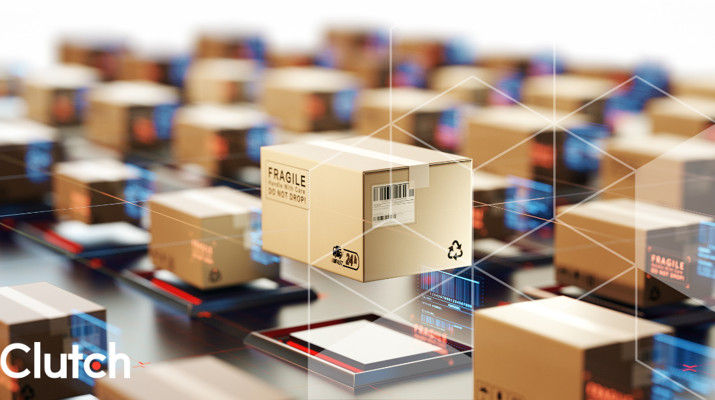

Updated December 16, 2024
Location intelligence refers to the collection and analysis of big sets of geospatial, GPS, and location data to transform this raw data into actionable business insights.
Data can be collected from vehicles, road and city infrastructure, mobile devices, and location platforms and then displayed on specific map layers or some other map-centric interface to conceptualize location insights and translate them into improved performance and cost-effectiveness.
The concept of location intelligence has become widely adopted across many industries, and it promises to continue growing. The global location intelligence market is predicted to reach $25.25 billion by 2025, with a CAGR of 15.3% over 10 years.
Looking for a Logistics & Supply Chain Consulting agency?
Compare our list of top Logistics & Supply Chain Consulting companies near you
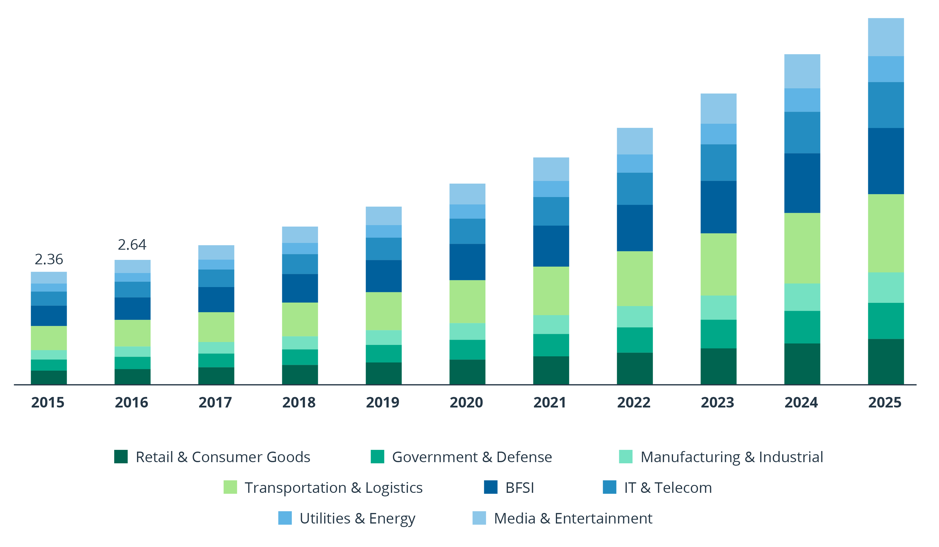
In the transportation industry, one of the most avid consumers of GPS and GIS technologies, location intelligence brings value to every business touchpoint. For example, the top benefits of location intelligence for transportation include:
Location intelligence helps you plan, monitor, and manage complex services like fleet management, logistics, and passenger transportation to increase the performance, cost-effectiveness, and productivity of your business.
How does it work in practice? I’ve chosen the most prominent use cases for implementing location intelligence in the transportation industry to trace the ways transportation companies can gain a competitive edge by applying location data to meet their business needs.
Combining real-time data from cameras, infrastructure sensors, and traffic feeds with a statistical approach can help you continuously monitor roadways and come up with optimal green times for traffic lights in potentially congested areas.
Location intelligence platforms may connect an unlimited number of traffic data sources and deliver reliable and precise estimates based on location data analysis, even for roads without enough detector information.
An algorithm of green time optimization for areas with dense traffic may update green time for lights by:

Another scenario for optimizing traffic management works by building alternative routes to get around historically congested roads and urban areas.
The main deliverables of smart traffic management systems for traffic managers, transportation companies, and municipalities are the following:
In both of these scenarios, the process can only be improved after the data is collected.
The cost of fuel adds up: The less fuel your drivers use, the less money gas stations pump out of your business.
Typically, fuel may account for more than 30% of your fleet’s operating expenses.
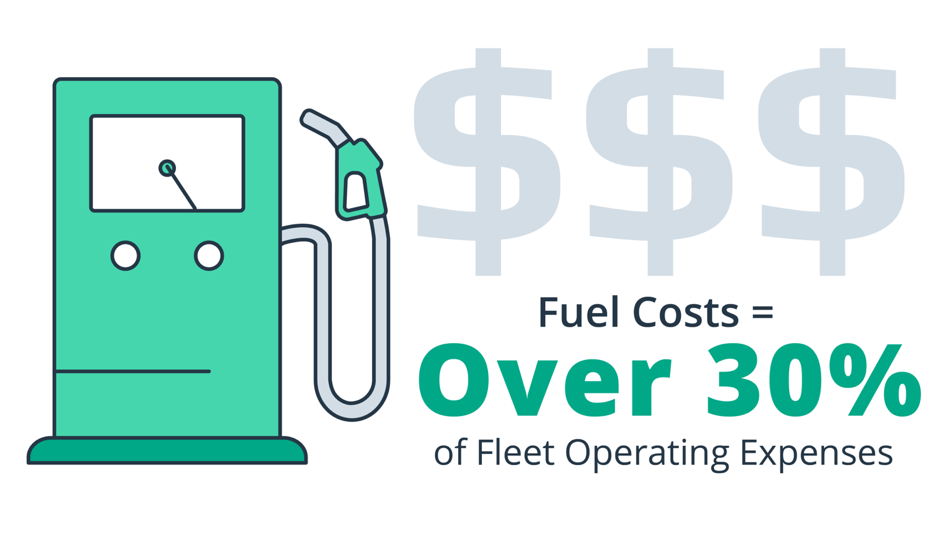
Taking into account the harmful effects of emissions, extra fuel consumption is a problem of a global scale. Location intelligence finds applications here as well.
Collecting real-time and historical data on fuel consumption and CO2 emissions helps you calculate the cost per mile for every fleet asset and reduce fuel theft.
To allocate costs efficiently, fleet managers can apply real-time monitoring and reporting solutions to identify specific route segments where a vehicle consumes the most fuel or where idle time impacts fleet consumption throughout the journey.
For transportation and logistics businesses, tracking a vehicle’s location is as important as tracking the assets it carries.
With the help of GPS, IoT-connected devices along the route, and smart sensors installed in and around vehicles, transportation companies can track the location of their fleets in real-time in the field or on the road.
Vehicle tracking happens when a GPS satellite sends a signal to a vehicle with a tracking unit. Data from the unit is transferred to a network tower and then a cloud server.
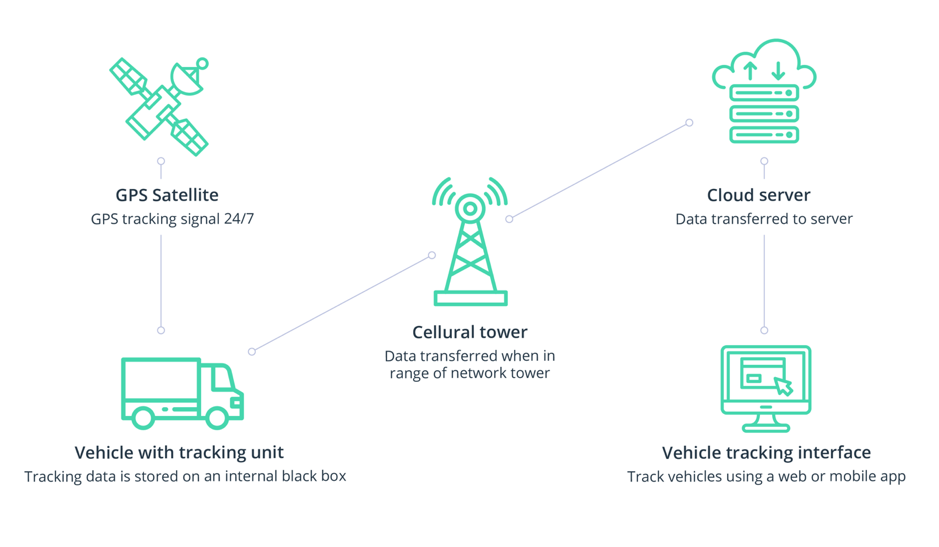
Lastly, the data is sent to the vehicle tracking interface such as a web or mobile app.
Location-based solutions for fleet management help to keep communication between all stakeholders of transportation services transparent.
This is done using a combination of vehicle, asset, and driver tracking, and this transparency enables accurate estimates of arrival times so all partners throughout every stage in the transit and logistics lifecycle are better prepared to act, react, and predict where they’re going to be.
Rerouting drivers during transit is another use case of location intelligence in transportation. Common scenarios of heavy traffic, inclement weather, and accidents impact the ETA for customers as well as the schedule of all stakeholders involved in transportation services.
Using location-based technologies, a dispatcher, fleet manager, or even virtual assistant can redirect drivers around congested areas or to other warehouses.
Being prepared and acting quickly to reroute vehicles using location data can also reduce wait times for loading and unloading at warehouses.
Modern transportation solutions should put safety and security first. The adoption of location technologies makes fleet management easier, more effective, and safer.
GPS-powered systems can track all the needed criteria from driving habits, behavior at the wheel, workload scheduling, assets, and vehicle location up to gas consumption and engine conditions in real-time.
Ignoring safety can also cost businesses extra money. The average accident costs around $21,000.
The average driver travels 25,000 miles a year – Businesses should consider what they can do to increase their drivers’ safety and reduce their fatigue.
Location tracking can also help protect your business’ property by preventing fraud using geofencing. Commercial fleet management systems have already proven the vital importance of geofencing in locating stolen vehicles.
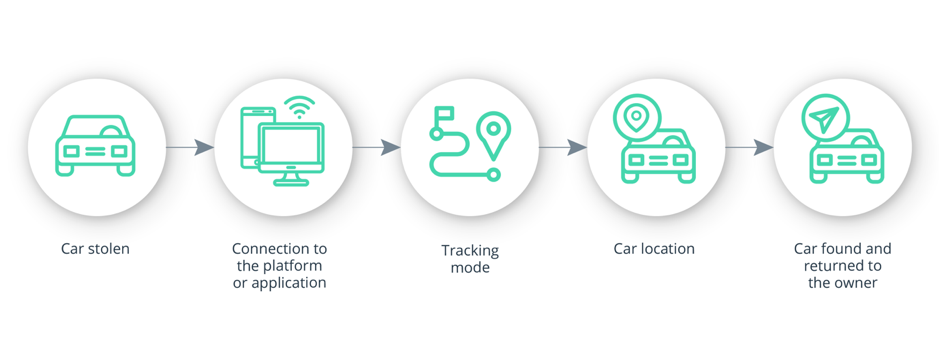
In-car sensors can determine when a vehicle has been stolen by recognizing a U-turn or significant deviation from the planned route. The alert system can then send notifications to an online platform, which can track the vehicle’s current position and mark it on the map as stolen, notifying the police.
With the help of a theft warning notification feature, a vehicle can be found soon after it’s stolen.
This technology helps keep your drivers and business safe.
For businesses of different sizes providing transportation and logistics services, location technology is a huge advantage. It allows companies to deliver more personalized and on-demand services using maps, embedded connectivity, and real-time data on road conditions, weather fluctuations, visual routes, and other location insights.
Transportation companies who are using patterns detected by location intelligence can tailor more efficient services and fulfill customer expectations. In the next decade, location intelligence should no longer be hype. Instead, it will drive down-to-earth change in the transportation sector.

